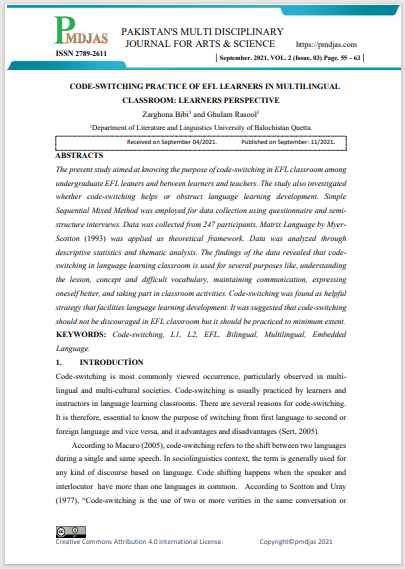Code-Switching Practice of EFL Learners in Multilingual Classroom: Learners Perspective
Keywords:
Code-switching, L1, L2, EFL,, Bilingual, Multilingual, Embedded, LanguageAbstract
The present study aimed at knowing the purpose of code-switching in EFL classroom among undergraduate EFL leaners and between learners and teachers. The study also investigated whether code-switching helps or obstruct language learning development. Simple Sequential Mixed Method was employed for data collection using questionnaire and semi structure interviews. Data was collected from 247 participants. Matrix Language by Myer Scotton (1993) was applied as theoretical framework. Data was analyzed through descriptive statistics and thematic analysis. The findings of the data revealed that code switching in language learning classroom is used for several purposes like, understanding the lesson, concept and difficult vocabulary, maintaining communication, expressing oneself better, and taking part in classroom activities. Code-switching was found as helpful strategy that facilities language learning development. It was suggested that code-switching should not be discouraged in EFL classroom but it should be practiced to minimum extent.
Downloads






